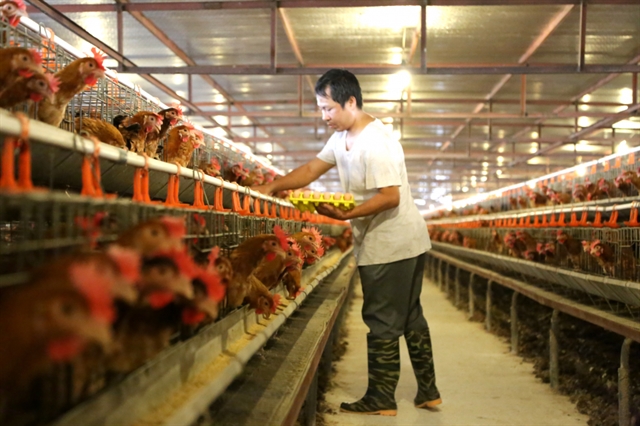Though export turnover of agriculture products in the first half of this year fell 3.4 per cent from the same period in 2019, leaders of the industry still hope to meet targets for the year set before the COVID-19 pandemic struck.
Minister of Agriculture and Rural Development Nguyễn Xuân Cường told a conference on the agriculture industry in Hà Nội on Monday that export turnover in the first six months was estimated at US$18.81 billion, more than 3 per cent lower than the same term last year due to the pandemic.
However, Cường said though export turnover in the first half decreased, the ministry was still determined to reach the target of total export turnover of $41 billion for 2020.
According to the report from the Ministry of Agriculture and Rural Development (MARD), the first half turnover included $8.94 billion from main agricultural products, $3.56 billion from fisheries, $5.3 billion from main forest products and $190 million from livestock products.
Except for exports of forest products, the other segments reported decreases of between 2.7 per cent and 19.4 per cent, said the report.
Of the exports, commodities with great export turnover decreases included rubber, tea, pepper, pangasius and shrimp. The four largest markets for agriculture and forest products of Việt Nam were still China, the US, Japan and South Korea.
Deputy Minister of MARD Hà Công Tuấn said the agriculture industry still gained 1 per cent in GDP growth, adding the trade surplus reached $4.5 billion, up $339 million from the first half of 2019.
Tuấn said the lower growth of export turnover was mostly due to lower export prices of key agricultural products and decreased export turnover to China amid the pandemic.
As MARD targeted to export $20 billion in agriculture products, $11 billion in forest products and wooden furniture, $9 billion in fisheries and another $1 billion from other products this year, it would focus on solutions to boost export value, Tuấn said, telling producers and exporters to concentrate on products with higher export value.
At the conference, leaders of the ministry said though the country was in the post-COVID-19 period with re-organising trade promotion activities to promote the consumption of agricultural products, it was still difficult to remove all obstacles due to travel restrictions.
Minister Cường said: “Though there are innovating and developing forms of production chains in the industry, they can not yet meet the demand. The innovation progress in many agricultural and forestry companies is still behind schedule.”
He added: “The rate of implementation and disbursement of the ministry’s investment capital is still slow, especially for Government bond and ODA projects.”
“Despite the drastic direction from MARD and the participation of localities, the task of increasing the pig herd to feed the country and lower the pork prices could only take place on large-scale farms and be carried out slowly in the small-scale breeding farms, which account for the majority of farming in Việt Nam,” he added.
“Reaching the planned target of 2020 is a very heavy and difficult task. To achieve a growth rate of 2.5 – 3 per cent for the whole year, it is necessary to continue all attention, guidance and drastic support of the Government, the Prime Minister and the synchronous co-ordination of ministries and localities.”
Cường said the ministry would focus on directing and managing in a timely and flexible manner, promoting the development of areas with room for growth.
At the same time, MARD proposed appropriate pork imports to benefit farmers and consumers, said the minister.
“It is key to ensure the production of about 43.5 million tonnes of rice for the food security for 100 million Vietnamese people and for the export of between 6.5 million to 6.7 million tones of rice,” he said.
The minister said the pandemic and the existing natural disasters added more challenges to the agriculture production of Việt Nam.
“With more difficulty, we must try two or three times harder to do all the tasks,” he said
